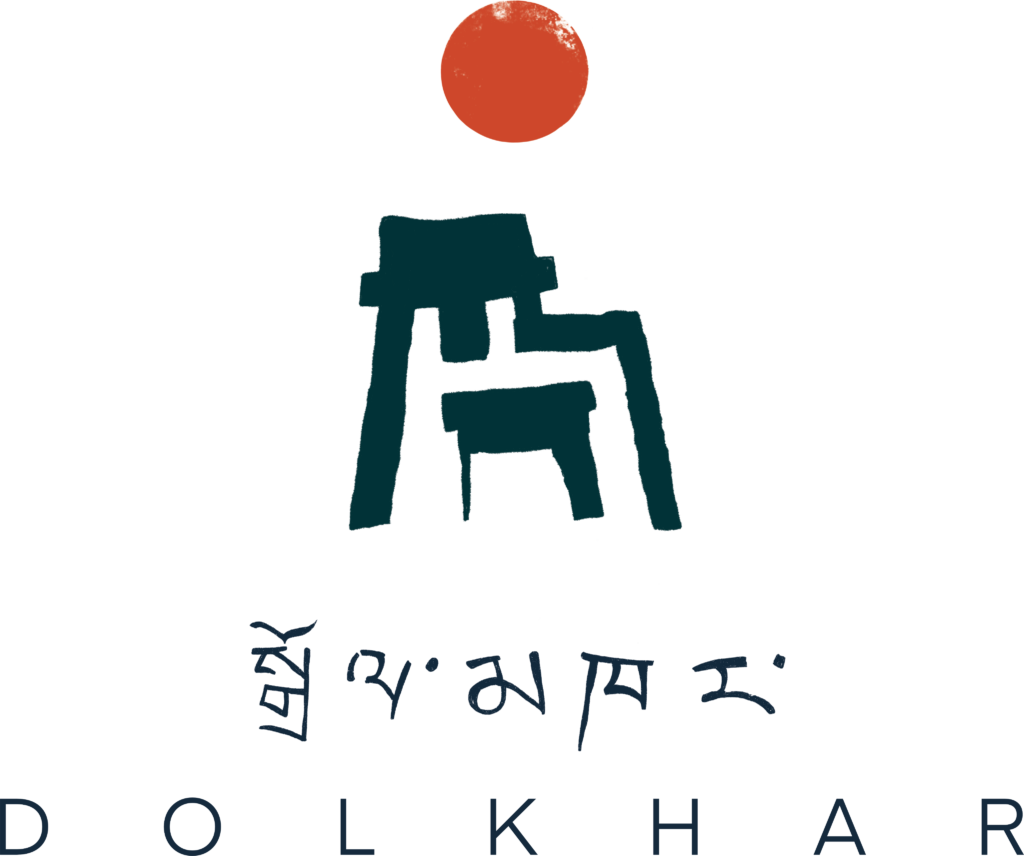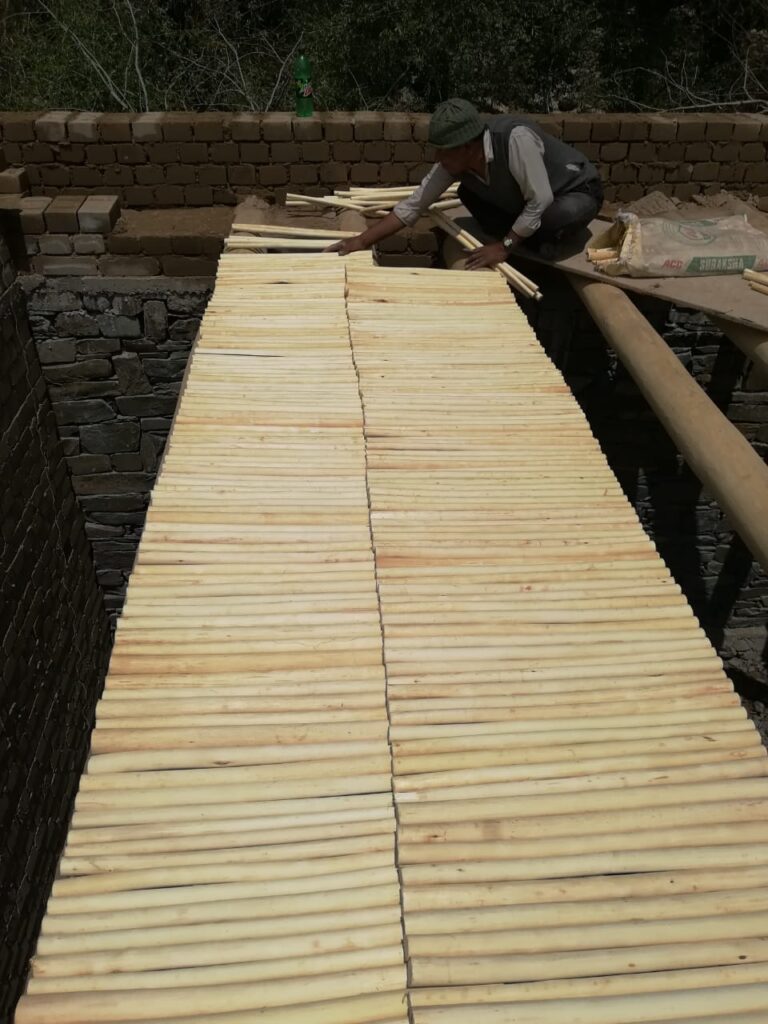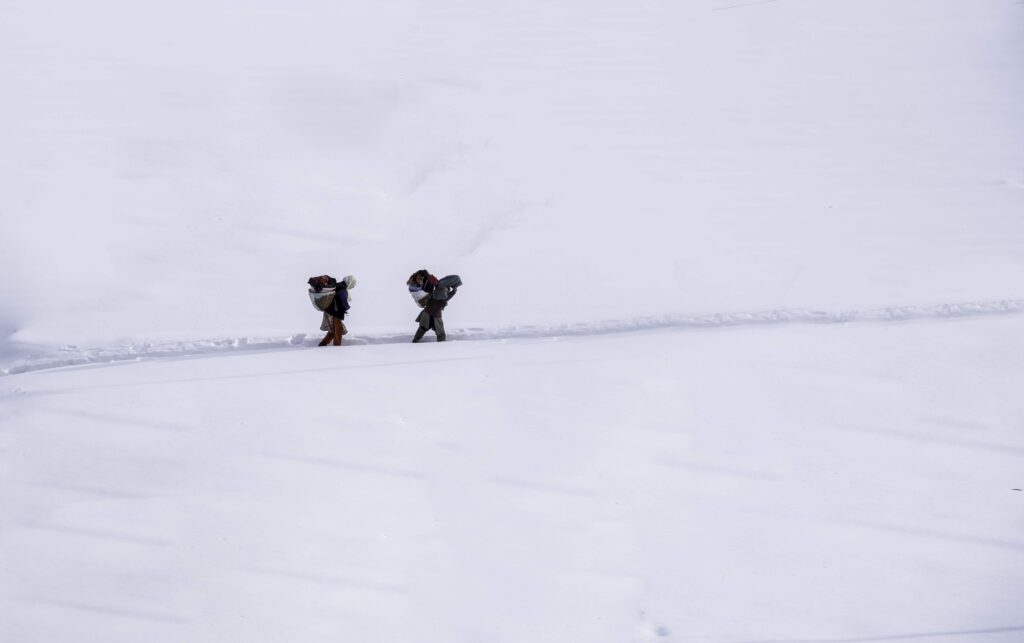A place so full of exhilarating and undiscovered mysteries is always a centre of attraction for the world. Ladakh, being one such place, holds much more than beautiful, unique landscapes, majestic mountains, and mesmerising lakes. Remnants of our centuries-old petroglyphs are a big cultural asset, and this form of art dates back to different historic and prehistoric periods ranging from the Bronze Age to today.
The petroglyphs, or rock art (a carving on a rock), found in Ladakh can be as old as the 3rd and 2nd millennium BCE (there are probably carvings from earlier times, but they cannot be dated with certainty). These art forms are the rarest and most unaltered forms of ancient remnants. Petroglyphs are essentially raw data from the past, and studying them provides a window into the people’s way of life, culture, and habitat. They show anthropological changes in belief systems and, interestingly, these beautiful art forms are found all over the valley.
Most people in Ladakh must have come across rock art in their life, as nearly every village in the region has petroglyphs in its surroundings. However, their importance was not recognized until recently. Negligence towards this rock art treasure has resulted in the degradation of many invaluable rock art sites due to new constructions, floods, erosion, and many other natural and manmade causes. Most of these degradations can be attributed to manmade actions. Live examples of such degradations can be seen near Khaltsi and Alchi, where most of the rock art has been destroyed for construction reasons. Despite greed being highly condemned in both Buddhism and Islam, it has been a major driving force behind the destruction of heritage everywhere in Ladakh.
The rock art of Ladakh forms a very particular set of heritage within India and in the world in general. These petroglyphs legitimately open windows into the past of the region. Almost all the villages have petroglyphs, making Ladakh one of the major hubs of rock carvings in the world. Over five hundred sites have been documented to date in the region. In the area of Leh, some of the important places where one can see rock carvings are the Chilling road, Basgo, Alchi, Sabu, Stagmo, Stagna, and Upshi. The most important sub-region of Ladakh for rock art is by far the stretch of the Sham sub-region that extends from Khaltse to Sanjak. We find there the most important concentrations of petroglyph sites, with some of the largest sites and countless high-quality images. One site that can easily be visited is, for instance, the Domkhar sanctuary. Some of the most striking sites of the Changthang sub-region can be seen in Tangtse, Mud, Anley, and in the stretch of the Indus valley that extends from Shera to Kiari.
In Purig (the Kargil sub-region), stunning examples of rock art can be seen in Datse, Genchoks, Mulbek, Kharul, and between Akshamal and Shilitse. In the Zanskar sub-region, the best petroglyphs are in the area of the confluence of the Tsarap and Kargyak rivers (especially in Cha, Zamthang, and Yal), in the stretch that extends from Tungri to Karsha, and in the area of Kumik. Finally, the sub-region of Nubra shelters some of the largest and finest rock art sites of Nubra, especially in Murgi (the largest site of Ladakh, with over 3000 carvings), in the stretch that extends from Yulkam to Panamik, in Phyuchen (valley of Khalsar), and in Deskit. All in all, dozens of rock art sites are being discovered every year, and many more are yet to be found all over Ladakh.
The Domkhar Rock Art Sanctuary is the only petroglyph site of significance that has been preserved. We may all be thankful to Stanzin Thangjuk for preserving this ancient heritage. The uniqueness and differences in the rock art show how Ladakh was not a no man’s land but a hub of many cultures compiled by inhabitants, travellers, and traders. For instance, at the site of Alchi bridge, one can see petroglyphs made in the BCE period, which include hunting scenes and depictions of numerous animals such as snow leopards. On one rock, these millennia-old carvings were superimposed by newer carvings of stupas, probably made around the 11th century CE, when armies of Od De, the descendant of Kilde Nyimagon and king of Ngari Skorsum, appear to have camped on this plateau in the course of their conquests of Sham, Purig, Baltistan, and even Gilgit. Interestingly, these armies were commanded by a magpon (or head general) who was from the illustrious Bro family. As it happens, it is a later member of this very Bro family, Skaldan Sherap, who founded the Dukhang of the Alchi Choskor after studying in Nyarma (the monastic university founded by Rinchen Zangpo in the area of Thiksey). We thus have here an amazing piece of the history of Ladakh carved right on the rocks of the plateau at the bridge of Alchi. Unfortunately, a very large number of the rocks there have been destroyed over the past decade led by the greed of contractors and people more interested in constructing guest houses than in preserving this outstanding part of the history of Ladakh. One lesson is that whenever anyone of us builds anything, it is our utmost duty to make sure that the stones we use were not obtained by destroying rock art. Rocks are virtually unlimited in Ladakh; it is so easy to source rocks that do not have carvings, we could so easily leave the carved rocks untouched from construction activities.
Another example of the stories told by petroglyphs lies with the rocks of Tangtse. There, one can see rock inscriptions written in a variety of ancient languages, which include Kuchean and Sogdian (two scripts formerly used in the Tarim Basin [Khotan, Yarkand, etc.]), Sarada (a script formerly used in Kashmir), Arabic, Chinese, and Tibetan. These inscriptions were carved a priori by traders and travellers during a period of time that can be mostly summarized as the Tibetan Empire (7th to 9th centuries) and are evidence of the variety of people and the great distances they travelled to come to Ladakh. These carvings even include Christian Sogdian crosses that were carved there about a thousand years ago. No other region of the Himalayas and of the Tibetan plateau has such rich diversity of inscriptions as Ladakh does.
Finally, one should mention the carvings of Murgi and Sasoma in Nubra. There, depictions of domesticated camels used in caravans are dated to the Bronze Age (3rd millennium – 2nd millennium BCE). These amazing carvings show that already four to five thousand years ago, there were caravans of camels traveling between Nubra and the region of Khotan. A fact that no one would even conceive if it were not for these outstanding carvings, witnesses of a time long gone.
Many researchers, scholars, and archaeologists have written about the petroglyphs found in Ladakh, such as August Herman Francke (late 19th to early 20th centuries), one of the earliest and most prominent scholars to have taken an interest in the heritage of the region. Indeed, the first wave of documentation of rock art was brought about by early explorers, at a time when nothing was known about Ladakh. Their work later became a source of information for the next generations to take forward. In these next generations, we can probably distinguish between the researchers, who focus largely on the analysis of the rock art, and the enthusiastic non-scholars, who focus more on the awareness-raising and conservation aspects of rock art.
One such great researcher who is studying this heritage is Dr. Quentin Devers, a permanent researcher at the French National Centre for Scientific Research (CNRS). Talking to Quentin, he shared the importance of the preservation of these rock art sites. He explained how, whereas in the past Ladakh was thought to be at the periphery of other rock carving cultures found in the regions of Gilgit and Baltistan, the number and refinement of the petroglyphs found in Ladakh now suggest that Ladakh was in fact the epicenter of rock art; this is where we find the most important concentrations of carvings in these entire stretches of mountains. Quentin says, “The rock art tells us about a lot of things. Ladakh was culturally a part of Central Asia. Rock art indeed shows clear links with numerous other parts of Central Asia. It shows how there have been a lot of different cultures over time in the region, that both coexisted and succeeded one another. The carvings found in the eastern part of Ladakh, as in Changthang, are different from those found in the western areas like Sham, Purig, and Nubra. And the area that lies in between them, that is the area that extends from Sangam (the confluence of the Indus and Zanskar rivers) to Upshi, has a mixture of both traditions (i.e., the traditions of eastern and western Ladakh). All in all, we can see that distinct cultures were spread in different parts of Ladakh, and that in places these cultures mixed and coexisted.”
When asked about the inclusion of petroglyph sites in travel itineraries, Quentin says, “Rock art sites should be included in travel itineraries, but the larger issue in Ladakh is that there is no training for tourist guides, especially related to rock art. Anyone who doesn’t have the knowledge and has not been trained won’t be able to give the correct information to the tourists, thus ruining the wonderful experience of visiting these amazing sites. The tourists would just be looking at the rocks with no idea of how old these carvings may be, what they depict, and what they tell us about the history.” Quentin believes that the new generation is more sensible to the issues of conservation and to the actual ancient past of Ladakh, which will hopefully result in a better understanding of the heritage of Ladakh and a better inclusion of the challenges it faces in discussions and policies.
In the enthusiastic non-scholar category is a group of locals that are concerned about the heritage and culture of Ladakh. This group is key for raising awareness of rock art as their target audience is not publications but the locals themselves. Once the locals become aware of their treasures, they will come forward to preserve their history. As of now, there are only a handful of people in this group. One such amazing person is Dr. Tashi Ldawa, Principal of EJM College Leh. Tashi Ldawa has a full-time job as principal, but his passion for preserving the rock art in Ladakh has made him travel all over the region since 1997, documenting these rock art sites and doing his best to spread awareness by organizing workshops, especially for children and the youth. Tashi Ldawa believes that the primary and initial step towards preservation is to make people aware of the wonderfulness of their assets. According to Tashi Ldawa, half the work is done if you educate your community regarding the significance of rock art in your area. Dr. Tashi says:
“Rock art sites will be a great value addition to the existing tourism industry. However, it involves a great risk of getting damaged if not taken care of properly. It should be taken care of with utmost sincerity and responsibility. Rock art is found everywhere in Ladakh, some in isolated areas and some in our backyards; people may damage the art by engraving, writing, and scratching, thus spoiling and destroying the millennia-old remnants. We need to invest not only in terms of money but also effort, training, and workshops.”
This analogy of Tashi Ldawa is accurate as we can see the conditions of many historical monuments in India. Tourism can play a great role in preserving and conserving the ancestral rock art only with a sense of responsibility and sustainability. Responsible tourism is the way toward the preservation of the rock art sites in Ladakh. They have the potential to be included in UNESCO’s World Heritage Sites, thus starting a new perspective of Cultural Tourism in the region along with preservation. These precious sites are so abundantly available in Ladakh, shouting their history for a long time, however now their voices are being suppressed due to our negligence. Tourism can become the voice of these artifacts. It tells about a place’s history and culture, thus making tourists responsible by just going through these. The rock art that we have is our cultural treasure. The locals need to be sensitive towards this rich heritage. And the sensitivity will come when they are aware of their culture and heritage resources.
Quentin Devers, Tashi Ldawa, Viraf Mehta, a social anthropologist, and Sonam Choldan, who has training in archaeology, are working on a comprehensive documentation of the rock art of Ladakh. To date, they have listed over 540 petroglyph sites all over the region, a few of which have thousands of carvings. Rock art is found almost everywhere. However, few places have a large number of such carvings, like the area between Khaltse and Sanjak, which has the highest number of rock art as compared to other places. The exploration of these petroglyphs by these four amazing people is still going on and they are working day and night to document these carvings and trying their level best to make Ladakhis aware of their true heritage and cultural treasures.
Being unaware of such great treasures in your own home may sound like negligence and as we carry on, we may want to point fingers at the administration, the schooling system, or even the media, but the truth is, although all these factors do play a role in what we experience, especially as children, it is our collective responsibility as people of the region to take initiative and contribute to our community. It is our duty to preserve. Together we can preserve every bit of Ladakh and conserve the rich heritage that we are blessed with.


